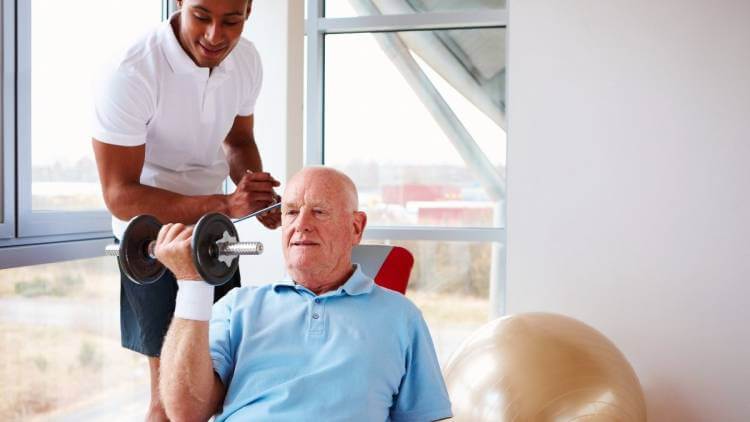As people age, there can be a gradual loss of ability to perform daily necessary activities that are usually taken for granted. It is important for caregivers, family members, and the individuals themselves to monitor their physical and mental abilities and refer any questions or doubts to the person’s physician.
What are Functional Assessments for Long-Term Care?
Functional assessments for long-term care are measures of an individual’s abilities that can be used to determine whether they qualify for long-term care services or not. Five basic assessment functions should be covered during a physical examination to help determine eligibility. These are meant to assess the senior’s ability for ADLs and IADls: handling self-care, such as bathing, getting dressed, grooming, going to the bathroom, and feeding oneself.
The ability to perform everyday tasks can decline slowly, almost imperceptibly. It usually happens when overall health deteriorates and cognitive abilities become diminished, and major changes in life circumstances occur, such as following the death of a spouse or when children move an appreciable distance away.
Perhaps ironically, independence can also decline when a senior moves into a nursing home or assisted living facility. I’ve seen this happen before. The individual finds that their new residential situation no longer challenges them to perform certain daily functions by him or herself. Nursing facility staff, often understaffed and pressed for time, often find it easier to just do the work for the individual than to challenge them to do it on their own.
While everyone ages and experiences some level of functional decline, not everybody ages in the same way. In an important 2012 study on aging, Loretta DiPietro, professor, and chair at the Milken Institute School of Public Health states that there are different patterns of aging.
Some seniors are more resilient than others. Not everyone ages the same way. In fact, during my time working in a nursing facility, it was often clear which individuals coming in for skilled care would end up staying for the long-term and which would recover and go home. Much depended on their overall health, history of physical activity, and their risk of disease and cognitive ability as measured by the Minnesota Mini-Mental Status Score, and basic lifestyle.
According to DiPietro, married men over the age of 80 appeared to age more successfully than singles. However, these men were more likely to move directly from successful aging to death, without any interim stage. The overall finding was that chronic disease, boosted by a sedentary lifestyle, played a critical role in unsuccessful aging, while robust health allowed for easier aging,
Clearly, there are habits and lifestyles that can bring about a more positive functional assessment for seniors.
Regular Functional Assessments
Most adults see their primary physician for chronic problems such as heart disease, diabetes, cancer, etc. Few seniors, or their caretakers, take that extra step of scheduling a functional assessment visit. Not many doctors will initiate such a visitor on their own. During a functional assessment visit, there are issues a doctor can recognize and help delay the onset of certain functional deficiencies.
Many seniors lose some of their vision and/or hearing capability. This can eventually affect functionality, but if caught early enough, these issues can be corrected with a simple chart screen test and/or a “whispered-voice test.” Early detection is the key.
The onset of cognitive problems can include depression, dementia, and delirium. The loss of loved ones can exasperate depression in seniors, and unfortunately, signs of depression can be vague. A doctor can ask a few specific questions, such as, “Have you been feeling sad during the past few weeks,” and follow up with a standardized test, if needed.
Physicians don’t always ask about their senior patients’ nutritional habits, and that subject should be raised during a routine functional assessment. In 2020, one in five seniors was found to be malnourished. Monitoring the eating habits of seniors is important because there is a direct correlation between nutrition and the risks of chronic illnesses such as depression and diabetes, and diminished functionality.
The physician performing the functional assessment test should also ask about the senior’s environment and any potential trip hazards and available support. An increased social circle usually translates into higher functional ability and better health.
6 Examples of Different Functional Assessments
Seniors require a certain amount of physical fitness to perform daily functions, such as lifting groceries, taking out the trash, and moving around safely. There are a number of functional assessment tests that can help determine a senior’s functional ability. These assessment tests are specifically associated with and geared for the elderly.
Six basic tests are given to assess a senior’s level of functionality.
- The 30-second chair stand assesses leg strength. The subject sits on a chair with no armrest, with his or her feet shoulder-wide apart and arms crossed at the chest. The subject rises and sits back down as many times as possible within a period of 30 seconds. The assessment score depends on the number of stands the subject was able to complete within the designated time. For men between the ages of 60 and 65, any number over 19 stands is above average. For women between those ages, 17 or more stands is above average.
- The arm curl test tests upper body fitness. The subject sits in a chair without armrests and must perform as many arm curls as possible within 30 seconds. During this test, men hold 8 pounds of weight in one hand while women hold 5 pounds. Men between the ages of 60 and 65 who do 22 curls or more are above average. Women who are those ages and can perform 19 curls are considered above average. For everyday functionality, this relates to the ability to carry groceries and other normal items.
- The 2-minute step test is designed to test mobility and balance in seniors. The subject “marches” in place while lifting the knee halfway up to hipbone level for 2 minutes. He or she can hold on to the wall during the test. Men between the age of 60 and 65 who can raise their knees more than 115 times are above average. Women between those ages who can raise their knees 107 times qualify as above average. The purpose of this test is to assess the subject’s stamina for walking from one place to another.
- The Chair Sit and Reach Test assesses the flexibility of the lower body. The subject sits on a chair’s edge, with the chair resting against a wall. One foot is flat on the floor while the other leg is extended. The subject inhales and reached for the extended foot while bending. The purpose is to measure the distance between the toes and the outstretched fingers.
- The 8 Foot Up and Go Test is intended to assess coordination and agility. The test requires a chair and some type of marker. Set the chair by a wall and place the marker 8 feet away. The subject is sitting down with his or her feet on the floor. On the “go” command, he or she will walk as quickly as he or she can to the marker, turn around, and sit back down in the chair. For men between the ages of 60 and 65, completing this in 3.8 seconds is above average. For women of the same age, completing the test in 4.4 seconds is above average. The test assesses a senior’s ability to get from one place to another in a safe manner.
- The Back Scratch Test assessed upper body flexibility, range of motion, and how close the hands can be brought together in the back. The subject is standing and stretches one hand down the back of the head over the shoulder with the finger down as far as possible. The other arm reaches behind the back with the fingers upward (The subject can pretend he or she is pulling down a zipper). The goal is for the tips of the fingers to meet and touch. If they do not touch, the score is negative; conversely, if they do touch, the score is a positive one. For men between the age of 60 and 65, a score of zero – the fingers just touching – is above average. For women in that age group, overlapping fingers by an inch and a half are above average.
Long-Term Care and Medicaid Waivers
Long-term Medicaid has specific requirements that seniors need to meet to become eligible.
The applicant must have a proven need for long term care. Each state’s Medicaid program has its own specifications and requirements. The basic required level is called the Nursing Facility Level of Care (NFLOC), which indicates the amount of assistance needed for normal daily activities.
The applicant can also apply for Home and Community-Based Services (HCBS) waivers. Each state must have a federal agreement with the Centers for Medicare and Medicaid Services (CMS) called their State Plan, which governs Medicaid coverage for each state. These are set with certain rules. States can opt, with approval from CMS, to create their own program outside the standard set of CMS rules. These are called waivers because they “waive” the rules in which are waivers that pay for help with daily assistance while the applicant remains in his or her own home. It also includes needed medical equipment such as wheelchairs.
To qualify for a state’s waiver, the applicant must prove that without the assistance, he or she would be unable to complete activities of daily living (ADL) and would need to be transferred to a nursing home or assisted living facility. CMS typically allows these waivers so long as the care outside a long-term care facility does not cost more than what it would cost to place the person in a facility.
Different states will have different rules, but these waivers allow seniors to remain at home while enjoying a certain level of independence that they would otherwise lose in a nursing home environment.
Nursing Facility Level of Care (NFLOC)
With standards varying from state to state, qualifications for NFLOC differ widely. The general considerations are:
- Ability to complete the Activities of Daily Living. This includes, but is not limited to:
- bathing; basic grooming; brushing one’s teeth; being ambulatory; using the bathroom; and getting in and out of bed or a chair.
- Instrumental Activities of Daily Living includes all the self-care requirements for ADL but also measures a senior’s ability to plan and process more complex thoughts. The ability to think less critically can sneak up on seniors, and caretakers should watch for signs. Some of the signs to watch for are the senior’s ability to place a phone call, do his or her own shopping, cook his or her own meals, keep the home clean, manage medications, get from one place to another by car, cab, or public transportation without assistance, and control his or her finances. Seniors who need help with the foregoing tasks may qualify for Nursing Home Medicaid, Medicaid waivers, and ABD Medicaid.
- Cognitive impairments, especially related to dementia and Alzheimer’s are also assessed.
Do All States Use the Same Functional Assessments?
Unfortunately, there are no statewide guidelines when it comes to functional assessment for long-term care. States can follow certain Medicaid standards (as described above) or even create their own individual state guide. There are no federal regulations that determine eligibility for a senior’s transfer to a nursing home.
The only federal requirements are a physician’s recommendation and an assessment by a nursing home that includes physical and cognitive capabilities – but there are no specific directions. In Maine, for example, the state contracts with an agency to send a registered nurse to visit the individual, review any case notes, and determine eligibility.
The lack of federal oversight has caused states to create their own functional assessment methodology. They can use the tools of their choice, the tools used in another state, or simply create a new and unique assessment tool.
These variations create problems in evaluating how well individual Medicaid programs are working and meeting the needs of seniors. Different agencies can require different waivers. Federal guidelines would create a better system of comparison and decrease the need for individual states to create or use their own assessment tools.
At this time, seniors are at the mercy of their own state’s resources and requirements, which can at times be vague.
Other Available Resources
Duke Aging Center for the Study of Aging and Human Development’s Older American Resources and Services Program has been designed to evaluate the services required when assessing functionality for seniors.
This Duke University program has been a major resource for individual states that are setting up their programs affecting long-term care and the required training to perform a functional assessment for seniors. Duke’s own geriatric research and training are among the US’s oldest and is one of the US’s five geriatric research centers.
The geriatric center at Duke in North Durham has a clinic that examines seniors for a wide range of problems – from cognitive decline, physical balance, and decreased functionality.




